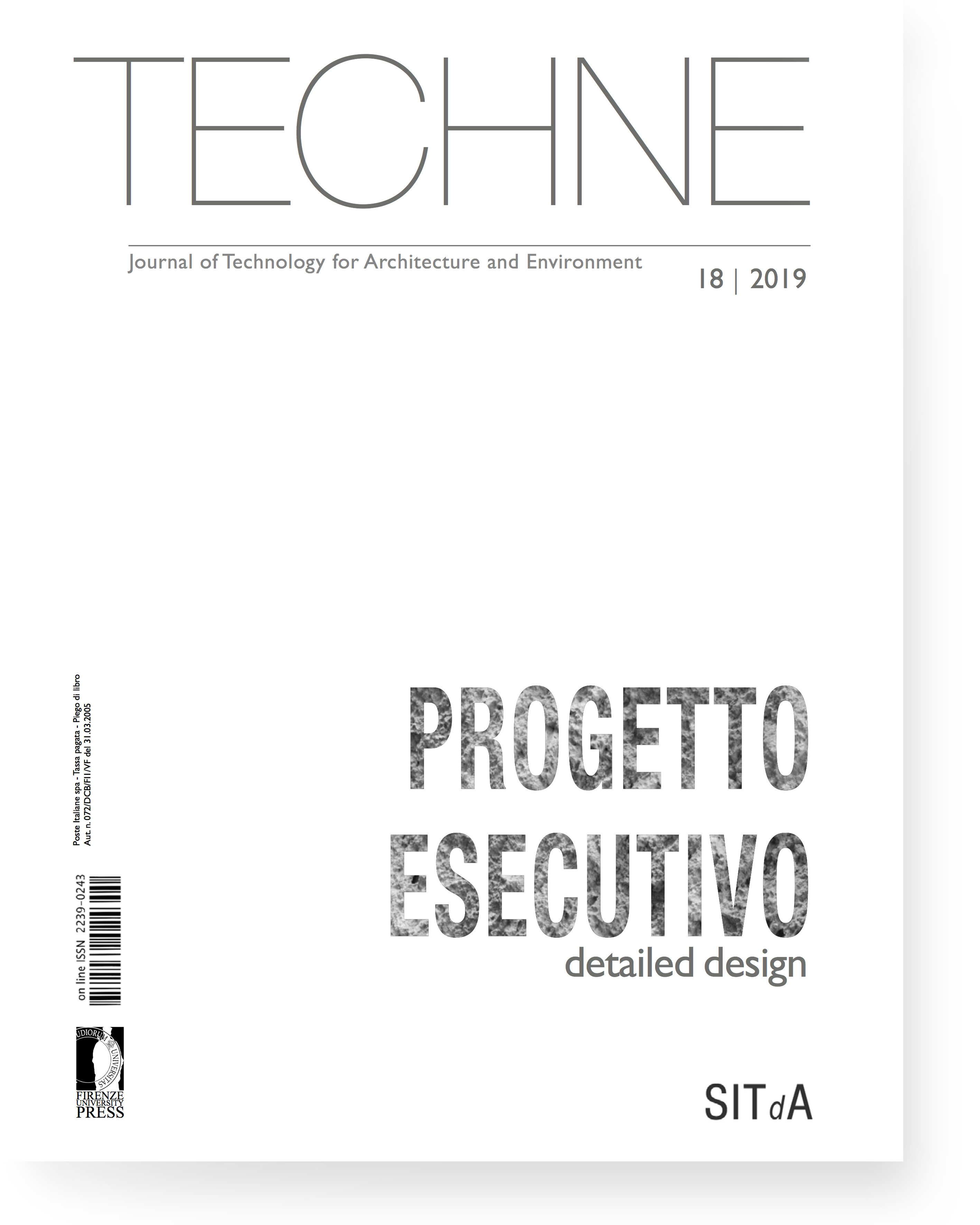TECHNE 18 (2019): Detailed Design
Issue Description
The economic crisis and the needs of society require an adequate analysis of the steps for political, technical and economic planning of the transformation processes of the built environment. The volume collects researches and experimentation contributions on the theme of the executive project as a device capable of guaranteeing the quality of the contents that are transferred from the project to the process of construction. The executive elaboration of the project is outlined as a means of knowledge and action aimed at structuring, anticipating and simulating the production and construction phases of the architectural work and its parts.

